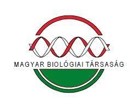A kakasmandikó (Erythronium dens-canis L.) demográfiai kutatásának módszertani megalapozása
Absztrakt
A hazánkban ritka és védett kakasmandikó (Erythronium dens-canis L.) életmeneté- ről, valamint populációinak demográfiai és dinamikai sajátosságairól kevés irodalmi adattal rendelkezünk. A faj előfordulási területének jelentős részén törvényi oltalmat élvez, illetve veszélyeztetett fajként van nyilvántartva, ezért különösen fontos az adathiányos állapot megszüntetése. Kutatásunk célja a faj populációbiológiájának jobb megismerését célzó demográfiai vizsgálatok megalapozása volt az egyedek egy vegetációs perióduson belüli életmenet-állapot változásának nyomon követésével három zalai állományban. Legfőképpen azt a módszertani kérdést kívántuk tisztázni, hogyan lehet az egyedeket állapotkategóriákba sorolni egy olyan évelő, többször termő faj esetében, melynek hajtásai nem egyszerre jelennek meg a vegetációs periódus kezdetén. Összesen 377 kakasmandikó tő került legalább egyszer felvételezésre 2020-ban, ezek közül 255 tövet (67,6%) mindkét vizsgálati időpontban, márciusban és áprilisban is fel tudtunk mérni. Eredményeink alapján jelentős különbségek figyelhetők meg az egyes Erythronium állományok szerkezetében, hely és időpont függvényében egyaránt, ezért az életmenet-állapotba való besorolást mindenképpen hozzá kell igazítani a felvételezés idejéhez és helyéhez. Az életmenet-állapot megállapítása a reproduktív tövek esetében egyértelmű, a juvenilis és vegetatív adult tövek esetében azonban a felvételezés idejétől függően mérsékelt bizonytalansággal végezhető el – egyes tövek besorolása a mérettartományok által meghatározott kategóriákba ugyanis változik a felmérés időpontjától függően. A juvenilis és vegetatív adult kategóriák között a mérethatárt a reproduktív tövek levélmérete alapján állapítottuk meg. Mivel az azévben virágzó tövek hajtanak ki először az állományban, ezek hamarabb érik el a kifejlett levélméretüket is. Feltételezhető, hogy a felmérés pontossága az idő előrehaladtával növekszik, mivel a később kihajtó tövek is elérhetik vagy megközelíthetik a maximális levélterület-méretüket. Egy későbbi időpont választásának további előnye, hogy egyúttal a reproduktív tövek termésképzési sikerességét is meg lehet állapítani. A késői felvételezést azonban akadályozza a tövek időközbeni elhervadása, eltűnése vagy károsodása, ami egyre gyakoribbá válik a faj tenyészidejének végéhez közeledve.
Hivatkozások
'100/2012. (IX. 28.) VM rendelet „A védett és a fokozottan védett növény- és állatfajokról, a fokozottan védett barlangok köréről, valamint az Európai Közösségben természetvédelmi szempontból jelentős növény- és állatfajok közzétételéről szóló 13/2001. (V. 9.) KöM rendelet és a növényvédelmi tevékenységről szóló 43/2010. (IV. 23.) FVM rendelet módosításáról”. Magyar Közlöny 128: 20903–21020.
Bérces S., Pintér B., Bezeczky G., Csáky P., Baranyai Zs. 2021: Tátorján vizsgálata a DunaIpoly Nemzeti Park Igazgatóság területén. XIII. Aktuális flóra- és vegetációkutatás a Kárpátmedencében nemzetközi konferencia. Program és összefoglalók, p. 80.
Biró É., Bódis J. 2018: Adatok a hazai adriai sallangvirág állományok természetvédelmi kezeléséhez. Természetvédelmi Közlemények 24: 25–33. https://doi.org/10.20332/tvk-jnatconserv.2018.24.25
Bradshaw M. E., Doody J.P. 1978: Plant population studies and their relevance to nature conservation. Biological Conservation 14(3): 223–242. https://doi.org/10.1016/0006-3207(78)90012-5
Dafni A., Cohen D., Noy-Mier I. 1981: Life-cycle variation in geophytes. Annals of the Missouri Botanical Garden 68(4): 652–660. https://doi.org/10.2307/2398893
Guitián J., Guitián P., Medrano M., Sanchez J. M. 1999: Variation in floral morphology and individual fecundity in Erythronium dens-canis (Liliaceae). Ecography 22: 708–714. https://doi.org/10.1111/j.1600-0587.1999.tb00520.x
Guitián P., Medrano M., Guitián J. 2003: Seed dispersal in Erythronium dens-canis L. (Liliaceae): variation among habitats in a myrmecochorous plant. Plant Ecology 169: 171–177. https://doi.org/10.1023/A:1026043411357
Guo Q., Wen Z., Zheng C., Li W., Fan Y., Zhu D. 2021: Effects of Robinia pseudoacacia on the undergrowth of herbaceous plants and soil properties in the Loess Plateau of China. Journal of Plant Ecology 14(5): 896–910. https://doi.org/10.1093/jpe/rtab041
Hanzawa F. M., Kalisz S. 1993: The relationship between age, size, and reproduction in Trillium grandiflorum (Liliaceae). American Journal of Botany 80(4): 405–410. https://doi.org/10.2307/2445387
Holland P. G. 1980: Trout lily in Nova Scotia: an assessment of the status of its geographic range. Journal of Biogeography 7(4): 363–381. https://doi.org/10.2307/2844656
Holland P. G. 1981: The demography of trout lily (Erythronium americanum Ker.) in Nova Scotia. Vegetatio 45: 97–106. https://doi.org/10.1007/BF00119219
Jendrasits L., Fischl G. 2008: Védett növényfajok rozsdagombái az Őrségben. Növényvédelem 44(7): 360–364.
Kawano S., Hiratsuka A., Hayashi K. 1982: Life history characteristics and survivorship of Erythronium japonicum. The productive and reproductive biology of flowering plants V. Oikos 38(2): 129–149. https://doi.org/10.2307/3544013
Király G. (szerk.) 2009: Új magyar füvészkönyv. Magyarország hajtásos növényei. Határozókulcsok. ANP Igazgatóság, Jósvafő, 616 pp.
La Rocca N., Pupillo P., Puppi G., Rascio N. 2014: Erythronium dens-canis L.: an unusual case of leaf mottling. Plant Physiology and Biochemistry 74: 108–117. https://doi.org/10.1016/j.plaphy.2013.11.005
Lendvay B., Kalapos T. 2009: A magyarföldi husáng (Ferula sadleriana) populációinak állapotfelmérése 2008-ban. Természetvédelmi Közlemények 15: 486–492.
Ma R., Xu S., Chen Y., Guo F., Wu R. 2020: Allometric relationships between leaf and bulb traits of Fritillaria przewalskii Maxim. grown at different altitudes. PLoS ONE 15(10): e0239427. https://doi.org/10.1371/journal.pone.0239427
Miller M. T., Antos J. A., Allen G. A. 2007: Demographic differences between two sympatric lilies (Calochortus) with contrasting distributions, as revealed by matrix analysis. Plant Ecology 191: 265–278. https://doi.org/10.1007/s11258-006-9241-1
Mondoni A., Rossi G., Probert R. 2012: Temperature controls seed germination and dormancy in the European woodland herbaceous perennial Erythronium dens-canis (Liliaceae). Plant Biology 14: 475–480. https://doi.org/10.1111/j.1438-8677.2011.00517.x.
Nagy T., Pfliegler W. P., Takács A., Tökölyi J., Molnár V. A. 2019: Distribution, infection rates and DNA-barcoding of Uromyces erythronii (Pucciniaceae), a parasite of Erythronium (Liliaceae) in Europe. Willdenowia 49(1): 13–20. https://doi.org/10.3372/wi.49.49103
Pupillo P., Astuti G. 2017: Population structure of Erythronium dens-canis L. (Liliaceae) in the northern Apennines (Italy). Italian Botanist 4: 1–14. https://doi.org/10.3897/italianbotanist.4.12439
Sawada S., Harada A., Asari Y., Asano S., Kuninaka M., Kawamura H., Kasai M. 1999: Effects of micro-environmental factors on photosynthetic CO2 uptake and carbon fixation metabolism in a spring ephemeral, Erythronium japonicum, growing in native and open habitats. Ecological Research 14: 119–130. http://doi.org/10.1046/j.1440-1703.1999.00288.x
Schnittler M., Pfeiffer T., Harter D., Hamann A. 2009: Bulbils contra seeds: reproductive investment in two species of Gagea (Liliaceae). Plant Systematics and Evolution 279(1): 29–40. http://doi.org/10.1007/s00606-008-0143-7
Soó R. 1973: A magyar flóra és vegetáció rendszertani-növényföldrajzi kézikönyve V. Akadémiai Kiadó, Budapest, 723 pp.
Tamm C. O. 1956: Further observations on the survival and flowering of some perennial herbs. I. Oikos 7: 273–292. https://doi.org/10.2307/3564927
Vacek S., Linda R., Králíček I., Vančura K., Prokůpková A., Prausová R. 2020: Effect of structure and dynamics of forests on the occurrence of Erythronium dens-canis. Journal of Forest Science 66(9): 349–360. https://doi.org/10.17221/96/2020-JFS
Virók V., Farkas R., Farkas T., Šuvada R., Vojtkó A. 2016: A Gömör–Tornai-karszt flórája, Enumeráció. Flóra Gemersko-turnianskeho krasu, Enumerácia. (Vascular flora of the Gömör-Torna Carst, Enumeration). Aggteleki Nemzeti Park Igazgatóság, Jósvafő, 200 + 910 pp.
Vojtkó A. (szerk.) 2001: A Bükk hegység flórája. Sorbus Kiadó, Eger, 340 pp.
Wein G. R., Pickett S. T. A. 1989: Dispersal, establishment, and survivorship of a cohort of Erythronium americanum. Bulletin of the Torrey Botanical Club 116(3): 240–246. https://doi.org/10.2307/2996813


















